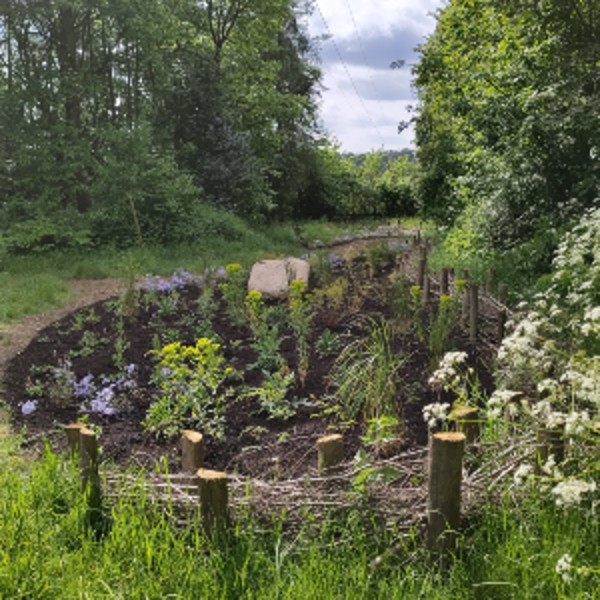Winter Work In The Garden
The perennial garden can feel a quiet and still place in the winter. The exuberance of the summer, and increasingly, autumn flowering plants is over. Grasses and seedheads might still stand proudly, though a lot have been battered this winter by the very wet weather we’ve experienced.
However, life is still stirring. Winter flowering plants like hellebores can continually give colour including splashes of red-wine coloured joy for months on end. Clear stems from Cornus sanguinea or the bare stemmed flowers of Hammamellis mollis can splash out like a neon highlighter on a black and white manuscript.
But spring will come as it always does – slowly at first, then in a rush, with a temporary pause before hurtling full pelt at us.
There are some things we can do now, in the quiet months, to set our gardens up for a good year ahead.
First of all, if there is any hard landscaping to be done, get it done now. While rains might cause hold-ups if you need to repair fences or repoint paving, it makes sense to get the landscaping done before the growing season starts.
And landscaping doesn’t need to be limited to patios and pavers. If you have an area of the garden to zone off, dead hedges are easy to construct, sustainable and give great wildlife cover. Hammer in pairs of wooden uprights every 75-100cm, and fill the space between with branches, offcuts of wood and twigs. It will rot down over time but if you have lots of woody shrubs and tree arisings, this is a great way of defining spaces and boundaries in your garden and helping wildlife while still having a designed “feel” to your space. They are particularly good for introducing curved lines to otherwise square spaces.
Below, a newly created dead hedge with spring flowering, Phlox divaricata ‘Clouds of Perfume’


It’s also a good time to widen your borders. Most gardens suffer from narrow strips of planting at the edges. Not only does this limit sun availability if you like to grow “full fat” sun loving plants, but these areas tend to be in dry, rain shadows or suffer badly from nutrient depletion if they are near hungry hedges. Narrow borders mean it’s harder to layer plants in varying heights and can make your planting look flat and drab.
Deepening your borders to give you greater planting depth - or carving a bed in the middle of your garden – are easy and cheap jobs to do in winter. It costs far less than patios or terraces, sequesters carbon and also helps with water management. Soil and plants can hold on to far more water than metres of paving, which simply channels the water away and contributes to flash flooding or boggy depths.
Marking out a new border doesn’t need expensive equipment. If you want a straight border, mark the new edges by putting in a couple of bamboo sticks connected with twine, and dig up along the line. Turn the turf over in squares and leave in place – no need to remove it, it will rot down in situ – and then mulch over the top. Come spring, the grass will have rotted down and you’ll be well on your way to a new expanded planting area.
If you are looking for a more organic, fluid shape, use a sun-warmed hosepipe to shape it roughly. Rather than using expensive and polluting marker spray, use the contents of an old bag of flour to mark out your shape. Lift and turn the turf as above.
You can also vary the above with a complete “no-dig” method by putting cardboard down and piling mulch on top. In my experience, this does take a bit longer to rot down but avoids any digging.
Finally, while the temptation to stay indoors with a warm drink holds on to us, have a look back at any photos of the gardening year just gone. Are there any gaps in terms of spaces you need to fill? Or equally are there temporal gaps – for instance in that May/June period when spring bulbs finish but before the height of summer flowering perennials? Make notes now. This helps manage the temptation to go mad on that first dizzyingly warm weekend at the nursery or garden centre, and helps you focus on what you need to replenish, without costing the earth.
Claire Mitchell is The Garden Editor and works part-time with us here at the nursery.
Claire is also a regular contributor on Basingstoke Community Radio and you can catch up with her podcasts here
https://gardeneditor.co.uk/podcasts
www.instagram.com/the_garden_editor
